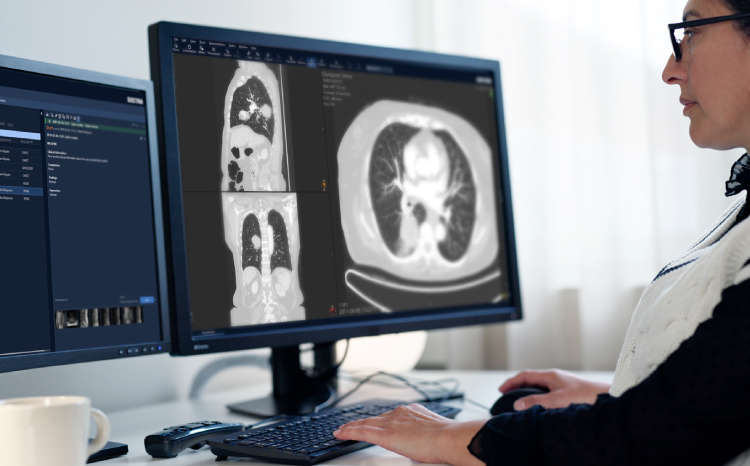The apprentice
- 25 August 2005
 John Aird
John Aird
Director of IM&T, University Hospitals of Leicester NHS Trust (UHL)
When I joined UHL as its first IM&T director, one of the hospital’s IM&T departments already had a track record of taking IT students from local university. We built on that when, four years ago, a routine enquiry from the nearby De Montfort University asked if we could place any of its IT undergraduates for their work experience year.
We arranged to pay the university a modest bursary for the student and to provide a work environment and support for their one year placement. UHL is a 11,000 person, £500m trust born out of the merger of three hospitals. This gives us the critical mass to take initiatives that might be more difficult for smaller organisations.
I was very interested in this scheme for three reasons:
- Firstly, having sons of my own I appreciated the need to offer good work experience opportunities whether brief school student experience or more professional career experience.
- Secondly, I had long valued the traditional approach of apprenticeship schemes. In my experience, graduates with a year’s work experience are far better equipped for their first job than those with little, or none.
- Thirdly, I hoped that by taking in a number of quality undergraduates each year, offering them a genuine opportunity to learn from the bottom up and challenging them in real working environment, that some would wish to join us as salaried employees at a later date. The advantages of both parties knowing each other removed so much of the risk associated with employing unknown people.
Taking part
|
"We have always recruited one of the work placement students after their course has finished " — John Aird, director of IM&T at University Hospitals of Leicester NHS Trust
|
In the first year, working with the university, we offered five places. Interested candidates sent us their CVs and preferences for what they wanted to do. We then arranged a ‘meet-and-explain’ session where several of my section managers briefly outlined the type of work they did and what the students might expect to do.
The students were then given the chance to meet and talk with the managers, eventually arriving at a sort of “who would like to do what list”. The type of work we offer includes: technical support (PCs, networks etc), project management, informatics and web systems development. Since then we have streamlined the process but still try to match interests with offerings.
We treat the students exactly the same as other trainee employees, allowing them time off for any college requirement, holidays and so on.
Since starting this programme we are now on our fourth group of students; the number varies between three and five. During this time we have always recruited one of the work placement students after their course has finished and sometimes also offering temporary employment to others while they settle on other careers.
Not all the students are stars, but judging from the quality of those we employ, the outcome is more than worth the effort.
I feel it is important to grow one’s own staffing capability through training and development and not just rely on, sometimes risky, external recruitment. Our modest association with DeMontfort University more than justifies our endeavours.
 A student speaks
A student speaks
Priya Jasmat (right), a former industrial placement student who went on to join ULH, answers some questions about the placement scheme.
When did you first go to UHL as a student?
It was a third year industrial placement.
Which degree were you studying?
BSc Computing
What sort of work did you do on your work experience?
I became involved in numerous activities and a range of projects including:-
- The Picture Archiving and Communications System (PACS) project – this was the focal point for my placement report which provided an overview of both the PACS and community PACS (CPACS). As well as carrying out an overall evaluation, I also looked at the benefits of CPACS in relation to patients and radiologists, and compared PACS at Loughborough hospital with PACS at Leicester General Hospital (LGH).
- I produced a Gantt chart for short-listing suppliers for the Internet Protocol Telephony (IPT) project within telecommunications.
- I wrote a report and compiled a project plan for the installation of Patientline at the Glenfield Hospital. I also drew up draft floor plans of the hospital, and the location of where the PCs would be mounted was pinpointed. I identified risks prior to the implementation stage, which were noted and solutions to these problems were given.
- While I was carrying out the telephone system audit I became familiar with the Tiger system and its functionality in relation to the reports produced by the telephonists.
- I set up numerous meetings and acted as the ‘scribe’.
- I was involved in reorganising the telecommunications budget into a meaningful structure. I also identified any overspends and reported this to the project manager.
What aspects of working life at UHL did you particularly enjoy? Or find particularly useful in relation to your studies?
During my second year at university I had learnt about project plans and time management and how to apply this to a project. During my placement I was able to put this into practice and see how they actually fit into an organisation.
I made use of what I had learnt during my placement in my dissertation as my research topic was about IPT (Internet Protocol Telephony) and its impact on UHL.
I enjoyed the different types of people I worked with.
Why did you decide to apply to work at UHL when you graduated?
Having done an Industrial Work Placement with the UHL I became familiar with the organisation and I knew my career interests were in Project Management. I felt well supported by the UHL and I could see scope for progression by joining the UHL.
Tell us about your current role as a trainee project manager.
I have been given projects in:
- Diabetes
- Physiotherapy
- Disablement Services Department (DSC)
I am doing an options appraisal for all these areas to find the best available system to meet the department needs. I am following the PRINCE2 methodology (Project Brief, Business Case) to allow me to find the solution to their problems. I am being supported by another project manager acting as a ‘buddy’.
What do you hope to do next in your career?
- Gain more on the ground experience.
- Work on my skills gap.
- Having recently been accredited a foundation level in PRINCE2 I hope to qualify as a PRINCE2 practitioner when I feel confident in applying theory to practice.





